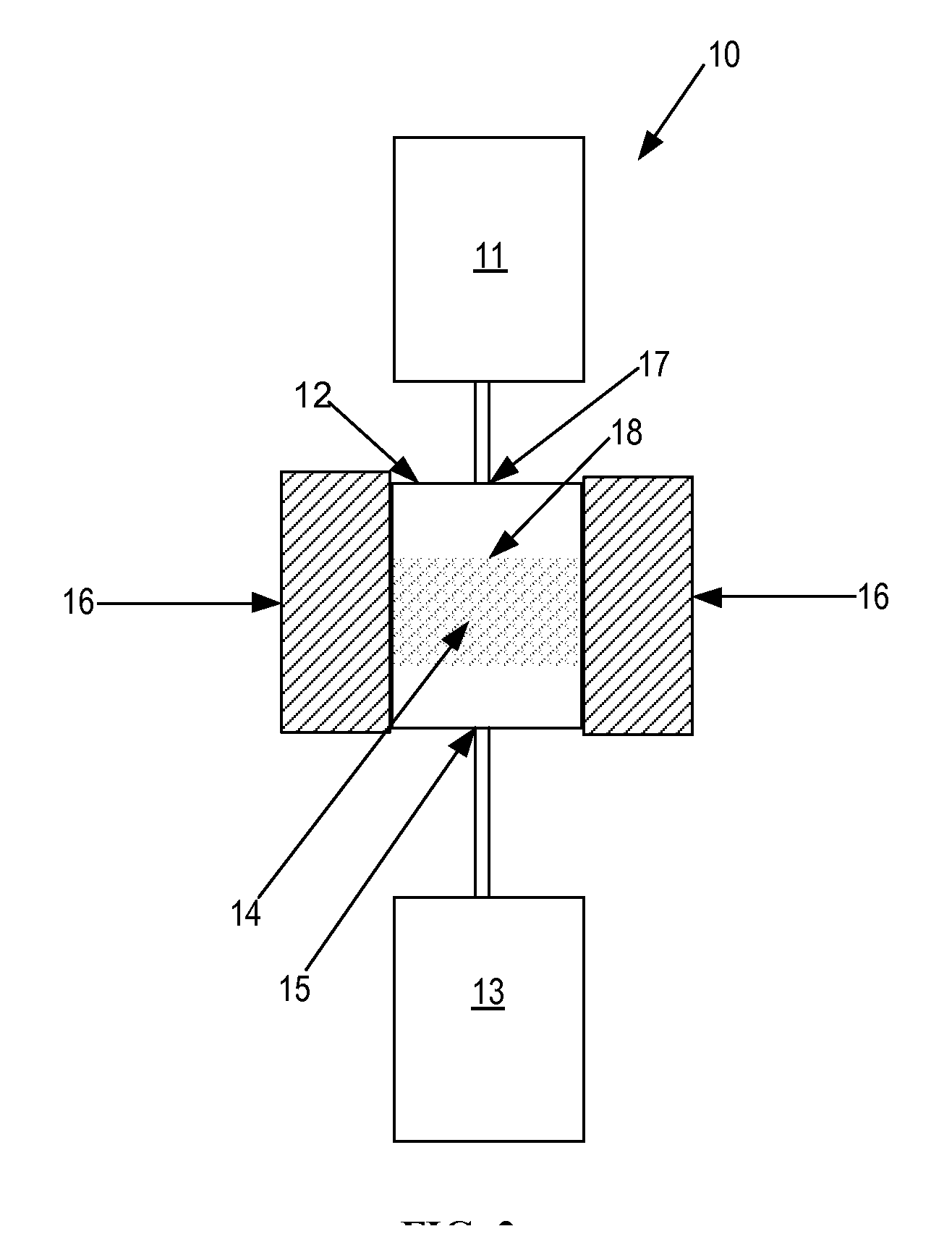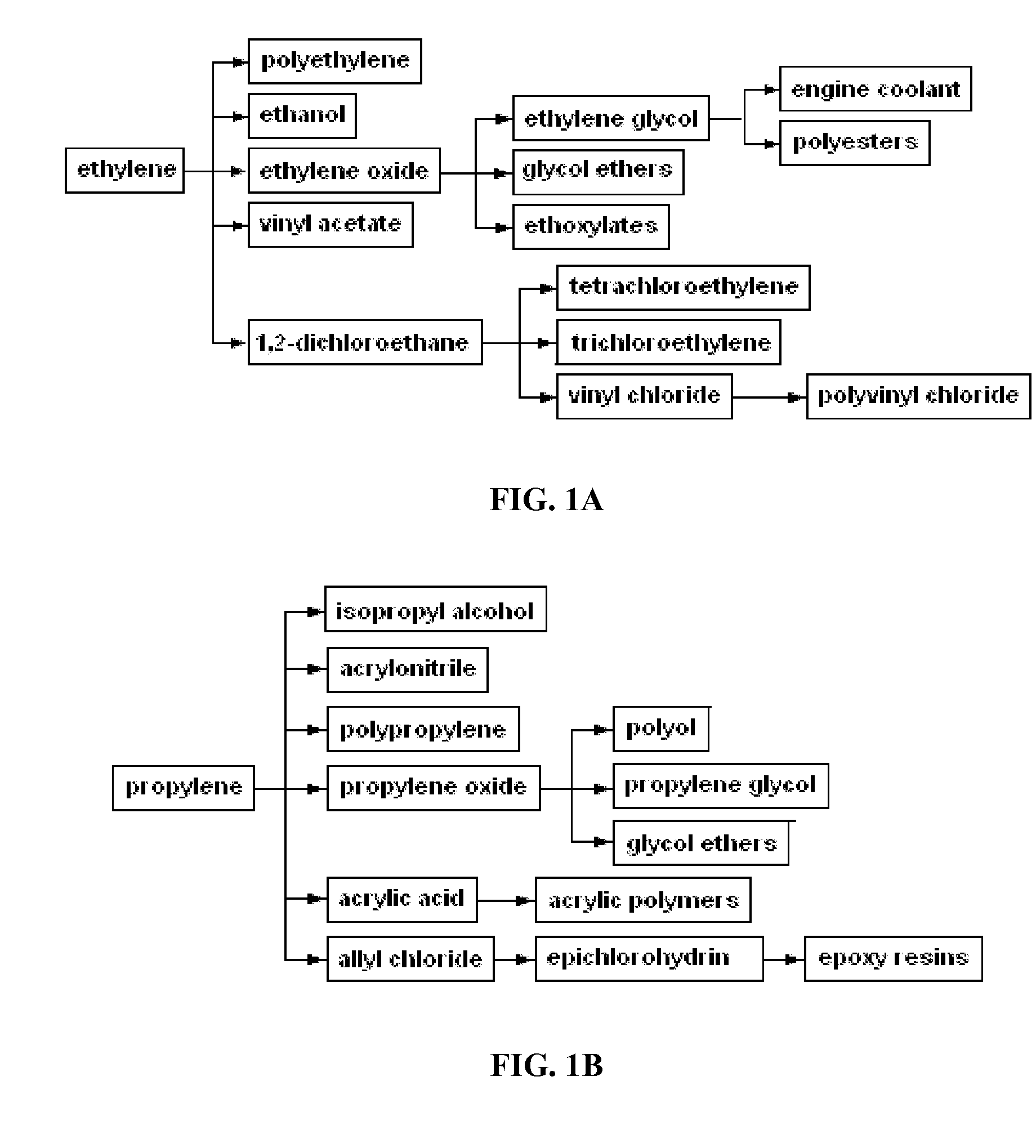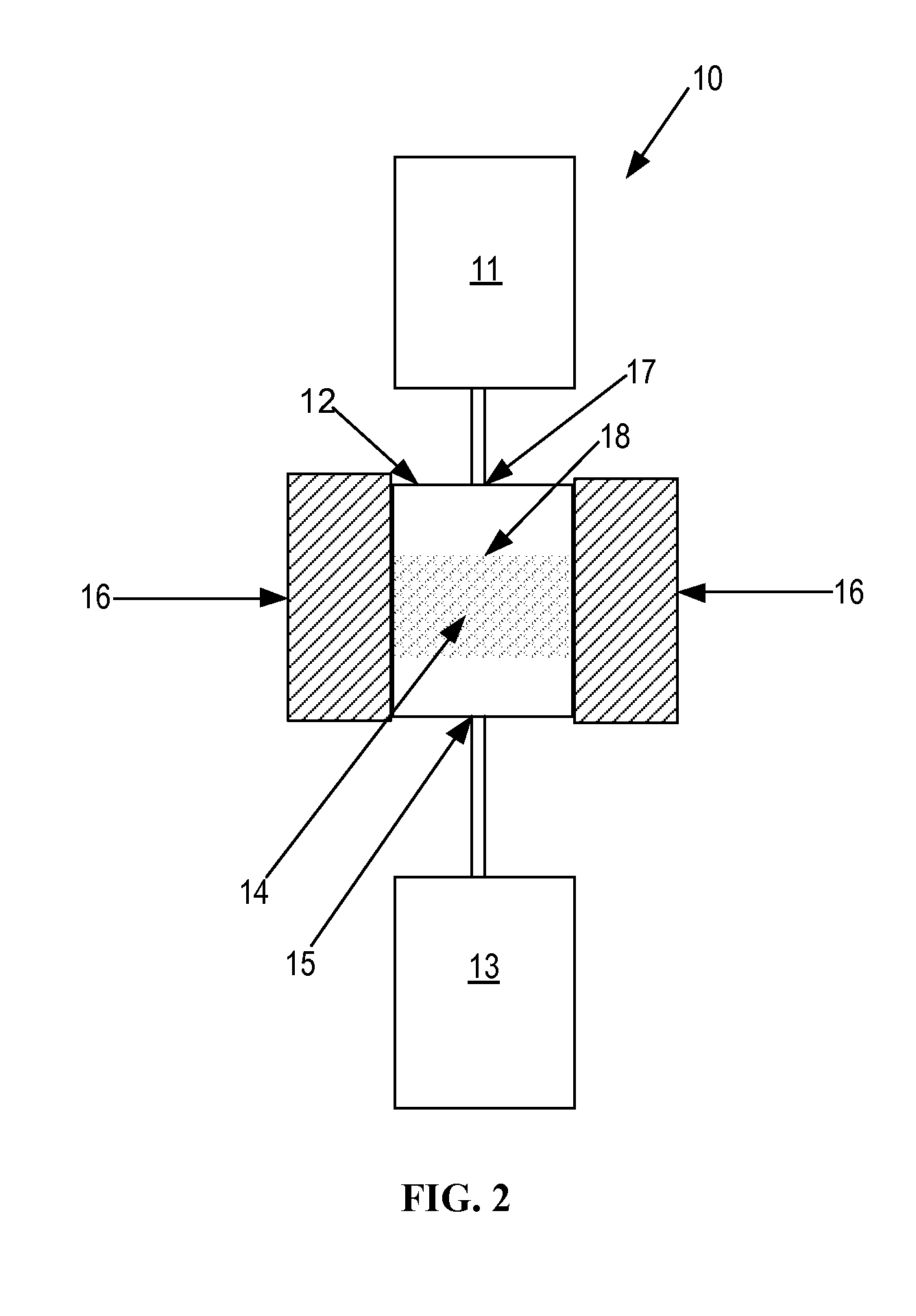Stable conversion of alkyl halide to olefins
- Summary
- Abstract
- Description
- Claims
- Application Information
AI Technical Summary
Benefits of technology
Problems solved by technology
Method used
Image
Examples
examples
[0057]The present invention will be described in greater detail by way of specific examples. The following examples are offered for illustrative purposes only, and are not intended to limit the invention in any manner. Those of skill in the art will readily recognize a variety of noncritical parameters which can be changed or modified to yield essentially the same results.
[0058]The materials used in the following examples are described in Table 2, and were used as-described unless specifically stated otherwise.
TABLE 2MaterialSourceTi-SAPO-34a (powder form)ClariantH3PO4 (85 wt % in aqueous)Sigma Aldrich(NH4)H2PO4 (ammonium dihydrogen phosphate)Sigma Aldrich(NH4)2HPO4 (diammonium hydrogen phosphate)Sigma AldrichCH3Cl (methyl chloride), 20 mole % (balance N2)PraxairWater (deionized)SABIC labsaTi-SAPO-34 obtained from Clariant International Ltd. (Munich, Germany).
Preparation of Catalysts A-M
[0059]A number of P-treated SAPO-34 catalysts were prepared by using a Ti-SAPO-34 powder and diff...
examples 1-8
(Methyl Chloride Conversion to Olefins)
[0076]Catalyst A, B, C, E, G, I, K and M were each tested for methyl chloride conversion by using a fixed-bed tubular reactor at about 350° C. for a period of about 20 h or longer. For catalytic test the powder catalyst was pressed and then crushed and sized between 20 and 40 mesh screens. In each test a fresh load of sized (20-40 mesh) catalyst (3.0 g) was loaded in a stainless steel tubular (½-inch OD) reactor. The catalyst was dried at 200° C. under N2 flow (100 cm3 / min) for an hour and then raised to 300° C. at which time N2 was replaced by methyl chloride feed (90 cm3 / min) containing 20 mole % CH3Cl in N2 was introduced to the reactor. The weight hourly space velocity (WHSV) of CH3Cl was about 0.9 h−1 and reactor inlet pressure was about 1 to 3 psig. Reaction conditions are summarized in Table 5. The reaction temperature was ramped to 350° C. after about 2-3 h of initial reaction period. The pre- and post-run feeds were analyzed and the av...
PUM
| Property | Measurement | Unit |
|---|---|---|
| Temperature | aaaaa | aaaaa |
| Temperature | aaaaa | aaaaa |
| Temperature | aaaaa | aaaaa |
Abstract
Description
Claims
Application Information
 Login to View More
Login to View More - R&D
- Intellectual Property
- Life Sciences
- Materials
- Tech Scout
- Unparalleled Data Quality
- Higher Quality Content
- 60% Fewer Hallucinations
Browse by: Latest US Patents, China's latest patents, Technical Efficacy Thesaurus, Application Domain, Technology Topic, Popular Technical Reports.
© 2025 PatSnap. All rights reserved.Legal|Privacy policy|Modern Slavery Act Transparency Statement|Sitemap|About US| Contact US: help@patsnap.com



